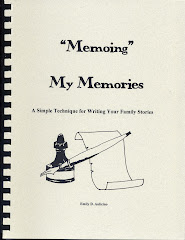There are several methods to bringing your story to life and avoiding the chronicling of mere facts. These processes help you breathe life into your characters and your story’s environment in order to create a full, dimensional picture. Life is multi-faceted with layers upon layers of complex feelings, emotions, and actions. Your characters must come alive and exhibit those traits. You must engage your reader into caring about your characters.
Each of the techniques below goes beyond the mere stating of facts. In order to get your reader involved in your story, you must be involved. In order for you to be involved, you must create a picture in your reader’s mind that resembles what you see in your mind’s eye when you relive the story. Your story must be full of details, but written in a descriptive, creative way. However, do not go to the extreme with adding details or you will lose the movement of the plot.
The methods used for enhancing your story and making it come alive include:
1. Developing your characters
2. Being descriptive and using imaginative language
3. Setting the tone or mood
4. Having an stimulating opening paragraph
5. Using exciting verbs and a variety of sentence structures
6. Using various literary devices such as Foreshadowing and Flashback
7. Using a point of view which best allows you to tell the story
(These topics will be addressed in more detail in furture blogs.)
These techniques can be divided to help you focus on developing your characters and your story setting. Use the following questions to guide you.
Character Development:
1. Have you shown the character’s personality and physical traits through their actions in the story? Do your characters pop off the page with personality or are they only two dimensional?
2. Do the characters show their action and reactions rather than you just stating those behaviors?
3. Do you show what motivates your characters?
4. Do you make your characters’ world real to the reader?
5. Have you researched your character or the times in which your character lived to add depth to the story? Often doing this research helps you recall small facts about the situation.
6. Are you introducing too many characters at once, so the reader cannot bond to any of them? If you do not develop your characters the reader will not care about them.
Story Structure:
1. Is your opening paragraph exciting? Have you used an event to capture the reader’s interest? Have you considered flashback?
2. Have you set the tone or mood of your story by using words to describe the scene rather than just stating the setting?
3. Is there some type of conflict or struggle in your story, and do you build the action to that point?
4. Do you use imagery which brings the story alive and underscores the action? Has your description included some of the five senses?
5. Have you used imaginative language in imaginative ways? Is your story burdened by clichés, boring verbs, or repetitive words? Is your sentence structure redundant? Have you created your own similes and metaphors?
6. Are you showing as well as telling your story? Are you using your character’s actions to tell the story?
7. Do you loose your reader with the lack of transitions between paragraphs?
8. Have you foreshadowed major events? Give your reader a clue that something exciting is coming.
9. Do you use a Point of View which works best for the story?
Remember: In life there is drama, and your stories need to reflect life. It is important to put yourself into the story to understand the characters and their motivation. This helps your reader care about your characters and become involved with the story.
Your story’s heart is beating...^./\...^./\...^./\
Emily
©Aulicino, Nov 2008
Subscribe to:
Post Comments (Atom)









No comments:
Post a Comment